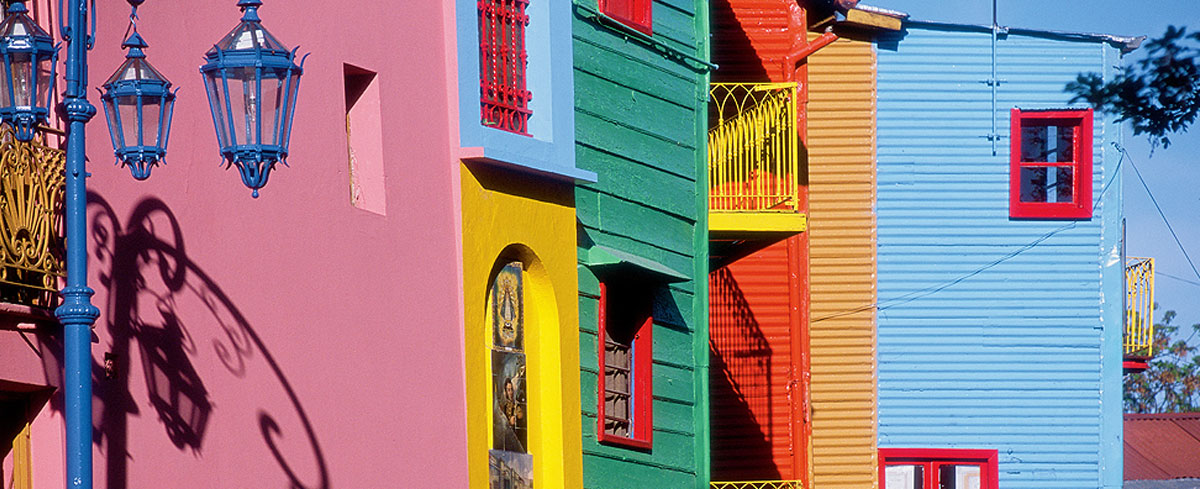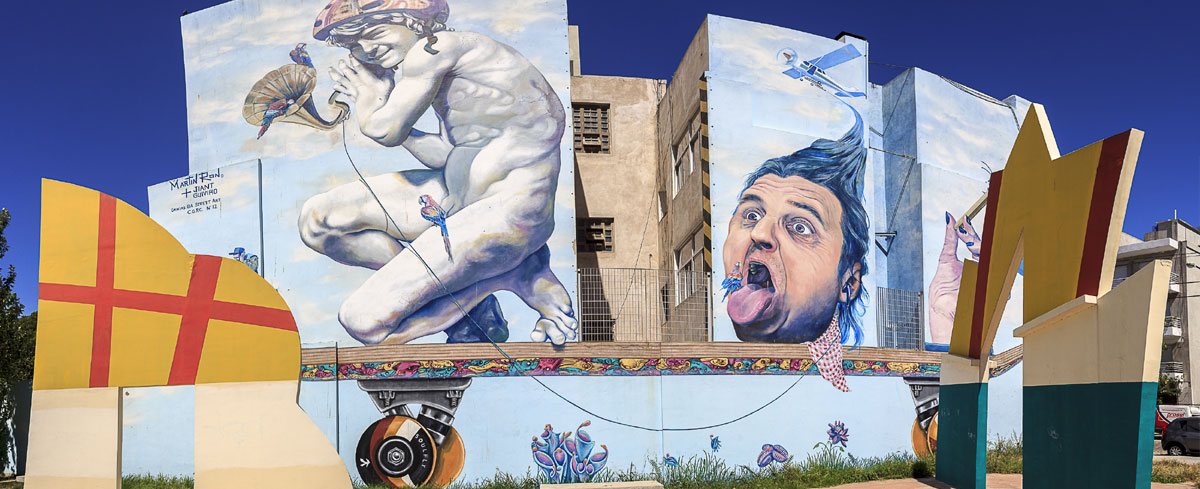Buenos Aires is a city that exudes art from its pores. As a melting pot of European and Latin influences, it’s produced and inspired many groundbreaking artists who have forged their own styles. Dozens of arts museums and galleries display work by both established and exciting up-and-coming artists, but you can also find work by many of the city’s most famous artists outside in the streets and parks. Here we look at seven artists associated with the city's past and present and the pieces to admire during your stay - in many cases for free.
The pop artist who turned art into an event and events into art.
The larger-than-life conceptual and performance artist from San Telmo, Marta Minujín became famous for her “happenings” in Buenos Aires, Paris and elsewhere: events which becomes works of art in themselves. After being influenced by pop art through her friendship with Andy Warhol, she gained fame internationally with her living installations that could be interacted with - crawled into or laid upon - and large-scale public interventions, including covering Buenos Aires’ obelisk in ice cream in 1964, building a Tower of Babel made from 30,000 books in Plaza San Martín in 2011 and a Parthenon of Banned Books in Berlin in 2017.
See: Look out for Minujín’s United Nations sculpture in Parque Carlos Thays.
The man who painted the port - in two senses

Benito Quinquela Martín was perhaps the Porteño painter par excellence, depicting the energy and hard work of the city’s port itself in La Boca neighbourhood. He produced vivid and vigorous canvases portraying scenes such as storms, fires and the daily working life of the docks and shipyards in the 1920s, but Quinquela Martín’s biggest and most ambitious work was not a painting on canvas, but his decision to begin painting an entire street, for it was on his initiative that La Boca’s Caminito came into being. He and a group of colleagues decided to paint the old tenement houses to bring life back to what was a largely abandoned passageway. They chose the name Caminito, the title of an old tango, and created a piece of living art with its own myths and legends that has become one of the city’s most visited attractions.
See: Stroll along the Caminito open-air street museum in La Boca soaking up the atmosphere, and if you want to learn more, drop by the nearby Benito Quinquela Martín Museum.
The pop realist

Antonio Berni was a great exponent of Latin American social realism, depicting the struggles of Argentine people amid the the effects of industrialisation but also incorporating elements of traditional customs and folklore to create a unique combination of influences. From the 1950s onwards he began incorporating pop art influences into his realistic work and making use of discarded materials to represent the authentic surroundings of a recurring character, Juanito Laguna, reflecting the lives of the poorest people in society.
See: You can find Berni’s gems at many museums in the city, but be sure to make a stop to his contribution to the frescoes on the domes of the Galerías Pacífico shopping centre.
The Peronist iconoclast

Santoro is a contemporary artist as controversial as the Chapman Brothers or Damian Hirst in Argentina owing to his fusing Peronist political imagery with religious iconography. Born in the neighbourhood of Constitución in 1954, he has mixed local pop culture with oriental stylings in pieces such as Gardel and the Samurai, but is most famous for courting controversy with comments on Argentina’s divisive political history, including paintings of Evita Perón smacking the bottom of a baby Lenin and eating from the body of Christ.
See: Santoro’s biggest work is the striking Evita monument overlooking the famous 9 de Julio Avenue from either side of the Ministry of Social Development.
The mystic inventor
The eccentric Xul Solar blurred the lines between art, invention and mysticism. A quintessentially Porteño creator: a writer, occultist, astrologer and poliglot (he was familiar with 20 languages and invented two of his own), he was in with Buenos Aires’ literary set of the first half of the 20th century and was an inventor as much as an artist, inventing his own piano (pictured) and his own version of chess in which the squares bore connections to the constellations of the heavens. His fantastical art was influenced by his interest in the occult and languages, and he dreamed of turning his home into a meeting place for artists and creators to be called the Pan Klub Foundation. In 1993, his widow Lita Cadenas, did just that turning the artist’s house into a museum following his instructions.
See: Gain an insight in the artist’s eccentric personality by discovering his former home-turned-museum hidden in a leafy residential street in the neighbourhood of Recoleta.
The rebel sculptor
Lola Mora’s sensual sculptures caused uproar in the city in her day, so much so that one of her most famous pieces, The Nereids fountain, was removed from Plaza de Mayo owing to the controversy caused by its display of the naked female form - it was relocated to Puerto Madero forming a central landmark in what is now one of the city’s most affluent neighbourhoods. Despite the controversy, Mora gained much acclaim and created several sculptures for the National Congress Building, becoming a pioneer for women artists in Argentina.
See: Don’t miss The Nereids fountain at intersection of Tristan Achaval Rodriguez and Padre Mingone.
The surrealist filling the streets with dreams

One artist who has a clear preference for public interventions over museums, using the city itself as his canvas, is Martín Ron. Born in the province of Buenos Aires, he’s become one of the best known street artists working in the Argentine capital, and his work can be found on the sides of buildings as well as in stations on the underground metro system. He was one of the first to paint large-scale works in the city, and has since taken his hyperreal style all over the world, finding interest and surrealism in everyday objects.
See: The huge triptych El Cuento de los Loros (The Parrots’ Tale) at the junction of Holmberg and Rivera in Villa Urquiza is testament to Ron’s surrealist vision.
Art lives in the streets of Buenos Aires. Find our more about the city's street art.
